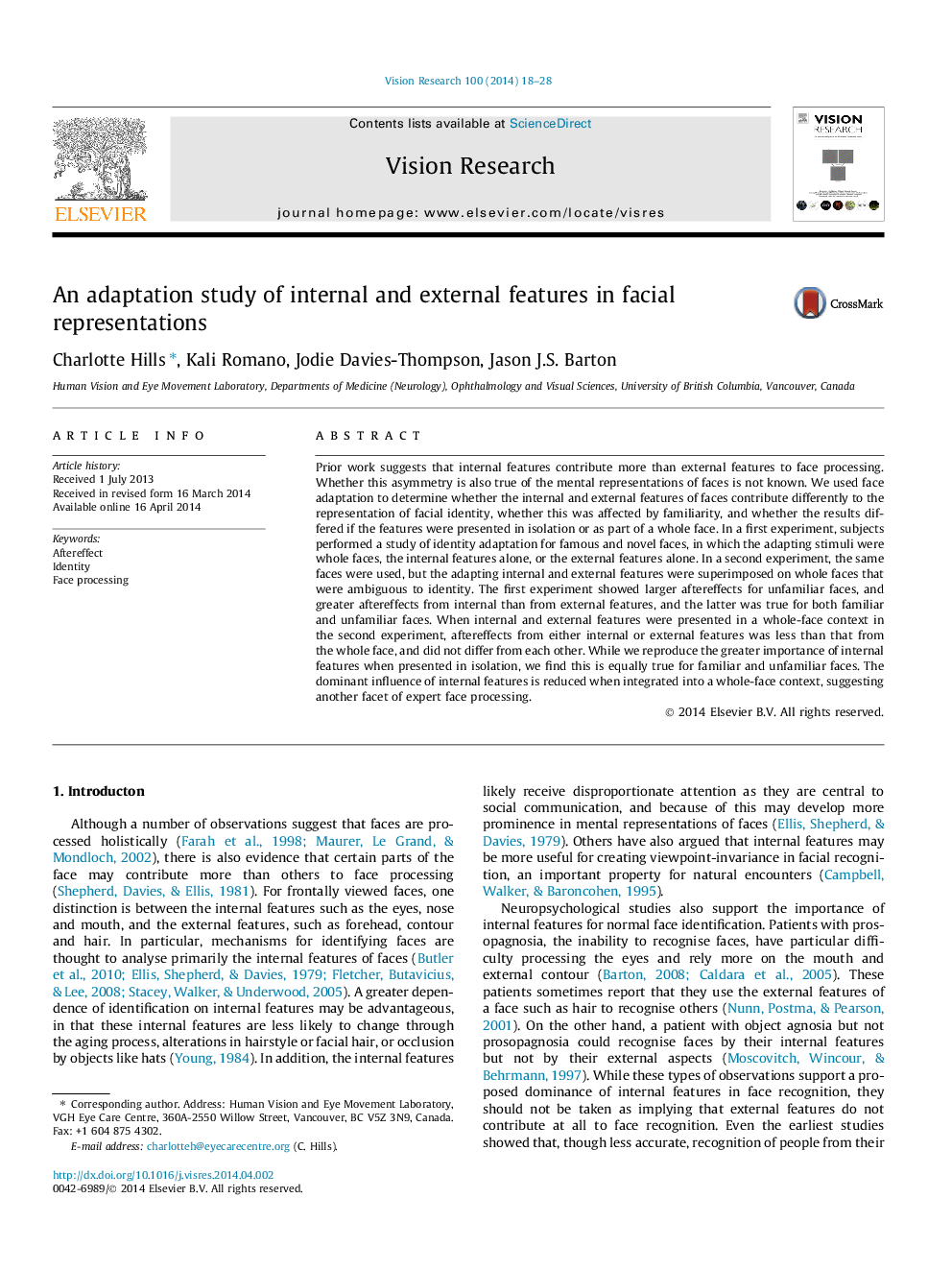| Article ID | Journal | Published Year | Pages | File Type |
|---|---|---|---|---|
| 6203321 | Vision Research | 2014 | 11 Pages |
â¢Greater aftereffects are produced from isolated internal than external features.â¢Adaptation from internal features is reduced when presented in a whole-face context.â¢In this context, internal and external features produce equivalent aftereffects.
Prior work suggests that internal features contribute more than external features to face processing. Whether this asymmetry is also true of the mental representations of faces is not known. We used face adaptation to determine whether the internal and external features of faces contribute differently to the representation of facial identity, whether this was affected by familiarity, and whether the results differed if the features were presented in isolation or as part of a whole face. In a first experiment, subjects performed a study of identity adaptation for famous and novel faces, in which the adapting stimuli were whole faces, the internal features alone, or the external features alone. In a second experiment, the same faces were used, but the adapting internal and external features were superimposed on whole faces that were ambiguous to identity. The first experiment showed larger aftereffects for unfamiliar faces, and greater aftereffects from internal than from external features, and the latter was true for both familiar and unfamiliar faces. When internal and external features were presented in a whole-face context in the second experiment, aftereffects from either internal or external features was less than that from the whole face, and did not differ from each other. While we reproduce the greater importance of internal features when presented in isolation, we find this is equally true for familiar and unfamiliar faces. The dominant influence of internal features is reduced when integrated into a whole-face context, suggesting another facet of expert face processing.
